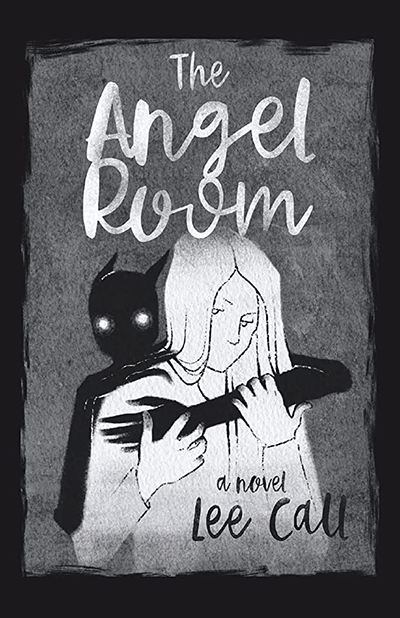 The Angel Room
The Angel Room
An abused teen's self-hating inner voice develops a separate existence in The Angel Room, Lee Call's insightful young adult novel about how Christian purity culture stymies healing from trauma.
Fifteen-year-old Eleanor is perpetually shadowed by Creep, a Gollum-like figure whom only she can see and hear. In her family's evangelical worldview, he would be considered a demon. The secular world would say he's a dissociated psychological part, a projection of her shame about being molested by a teenage male babysitter. The novel doesn't need to resolve this issue, because in the end it doesn't matter. To Eleanor, he is as real as the secrets that she can share with no one else.
Creep is both friend and tormentor. He knows her true self, which is a comfort in her lonely and false existence within her strict family. But Creep refracts what he knows through a distorted lens that was polished to perfection in a Christian milieu where loss of sexual innocence is always the girl's fault, whether consensual or not.
Complicating matters, Eleanor still has romantic feelings for her perpetrator, a family friend, who is now in his mid-20s and continues to gaslight and seduce her. But when she moves to a new neighborhood, she makes two friends who show her what safe intimacy feels like, for the first time: Virgil, a shy boy who shares her passion for horses, and Mia, an outspoken queer Goth girl. Attracted to both of them, Eleanor discovers that she's bisexual and nonbinary. Both relationships were portrayed with gentleness and sweetness that leavened the horror of Eleanor's inner struggles. She does her own healing, but her two allies provide the reality check that lets her choose an alternative to her family's oppressive beliefs.
The Angel Room's intriguing title has a symbolic significance that I won't spoil, just say that it is introduced in a small but meaningful scene at the beginning, and brought back at the very end in a way that is subtle but well thought out. The title also conveys that this is a book about faith, the supernatural, and something important concealed within a home.
The cover and interior design were top-notch. The cover image is a scratchy, haunting black-and-white drawing of a mouth-less young woman embraced by a dark demon. This captures the themes and vibe of the book as a coming-of-age story with horror elements. Inside, the chapter sections are punctuated by ink-stain designs and diary entries in a handwriting font, giving the narrative the realistic feel of a young adult's personal story. The text had no noticeable proofreading errors.
I did feel that the book was too long at 429 pages, both for the attention span of the target audience, and for the plot itself. There aren't enough new revelations about the facts of her trauma to justify the length. Call me a cynic, but her parents' change of heart was too big and sudden a swerve from their lifelong beliefs, especially her father's. It needed more time to prove that it was genuine and long-lasting.
The Angel Room rings true emotionally and spiritually. It will help readers break free of the "Creeps" in their lives.
Read an excerpt from The Angel Room (PDF)
Buy this book on IndieBound and Amazon








